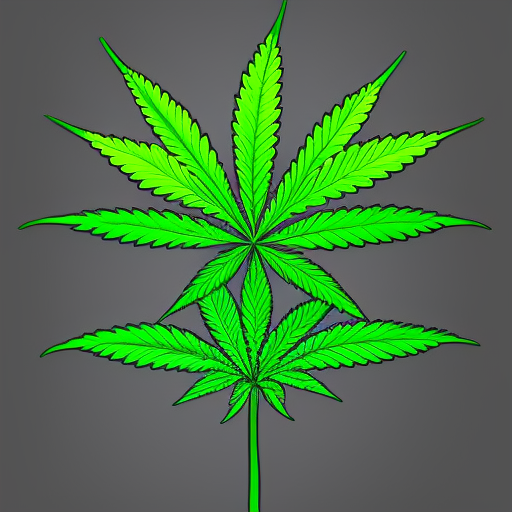
Yo, what’s good my fellow cannabis enthusiasts? You know how we all love to light up a joint and chill out? Well, imagine if one day you wake up feeling like total crap every time you take a hit. Welcome to the world of cannabinoid hyperemesis syndrome (CHS).
Now, I know what you’re thinking. Cannabis is supposed to be safe, right? And it is! Thousands of years of use with no recorded deaths from cannabis alone means that the herb poses very low risk. But for a small group of people, using cannabis can cause some seriously nasty symptoms like vomiting, pain, and strange compulsive behavior.
So what exactly is CHS? According to the legendary weed guru Dr. Ethan Russo, CHS is an “enigmatic constellation of signs and symptoms” that affects some people who use cannabis heavily and for extended periods of time. Medical professionals identified the condition in Australia back in 2004 in nine patients, but it was traced back to a man who first exhibited symptoms in 1996.
Usually, people with CHS will use cannabis for years before they start experiencing any signs of the condition. But after constant exposure to high levels of THC, symptoms start to emerge. This typically results in severe and prolonged vomiting, which can lead to frequent hospitalization.
But here’s where it gets tricky: practitioners often misdiagnose CHS as cyclic vomiting syndrome (CVS), which can be treated with medical cannabis! This means that patients may make several trips to the emergency room before finally receiving a correct diagnosis.
However, doctors are starting to identify CHS much earlier now. Some researchers even believe that CHS is a massively underreported issue that will only get worse with increasingly high THC levels in modern cannabis varieties.
And get this: CHS has actually debunked the myth that “cannabis can’t kill you”. There have been at least two documented deaths linked to this toxic reaction to THC.
So what are the symptoms of CHS? They can be divided into three stages:
1. Prodromal Phase: This is the period between initial symptoms and the full-blown development of the condition. Symptoms include early morning nausea, abdominal pain, and fear of vomiting.
2. Hyperemetic Phase: This is when the symptoms really start kicking in. Symptoms include ongoing nausea, repeated vomiting, abdominal pain, dehydration, reduced food intake, and weight loss.
3. Recovery Phase: This begins when a patient with CHS stops using cannabis. Symptoms gradually fade and patients start to tolerate food normally again. The recovery period can last from several days to several months.
Now here’s where it gets really interesting. You may think that THC helps to reduce nausea and vomiting, but for many CHS patients, cannabis actually makes them vomit more! While ongoing studies explore the antiemetic effects of small doses of THC, larger doses are known to promote vomiting.
But that’s not all. CHS also causes strange compulsive behavior in patients like compulsively bathing in hot water! In fact, around 92% of CHS patients report taking frequent hot baths or showers to relieve their symptoms. Some even spend most of their day sitting in a tub!
So what causes CHS? Large doses of THC can cause vomiting in anyone, but many CHS patients consume the same amount of cannabis as other people who don’t experience these symptoms. Some users even point fingers at contaminated cannabis flowers, suspecting residual pesticides as the cause. However, Dr. Russo has refuted this claim, stating that there is no correlation between symptoms of pesticide poisoning and CHS.
Unfortunately for CHS patients, their toxic reaction to THC likely stems from genetic factors. Dr. Russo and his colleagues have found five genetic mutations that distinguish CHS patients from other cannabis users who don’t vomit after THC exposure. The team also points to changes in the endocannabinoid system that might underpin the symptoms of the condition.
So what’s the deal with CBD? While THC seems to be the main culprit, researchers state that cannabinoids like CBD and CBG could conceivably play a role in CHS. Both cannabinoids exhibit pro-emetic effects at high doses, but more research is needed to find out for sure.
Diagnosing CHS can be tricky, but clinicians look for presenting signs like a history of regular cannabis use for over a year, severe nausea and vomiting, cyclic vomiting over months, symptoms ending after stopping cannabis use, compulsive hot bathing or showering, and abdominal pain.
Treatment options for CHS include capsaicin (the spicy molecule in hot peppers), antipsychotics like haloperidol and olanzapine, intravenous solutions to combat dehydration, and pain medication to take the edge off abdominal pain.
Now, here’s the bad news. Researchers are still untangling CHS, but it seems that it’s permanent. The genetic basis of the condition means that symptoms will likely return every time a patient returns to the herb. But upon quitting, symptoms should fade.
So there you have it. CHS may sound scary and weird, but it affects a small percentage of people who use cannabis heavily and for extended periods of time. Keep in mind that cannabis is still a relatively safe herb with low risks compared to many other substances out there. So smoke up, my friends, but do it responsibly!





Man, I heard about that Cannabinoid Hyperemesis Syndrome and it sound wild. Folks be thinkin weed just chillin but it can mess you up too. Gotta be careful with that.